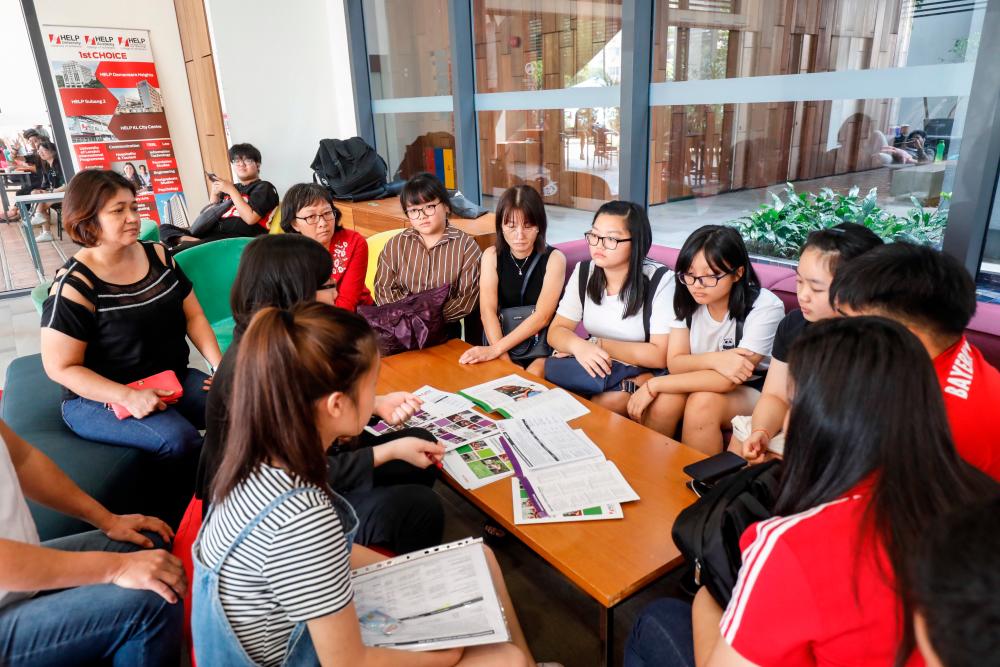PETALING JAYA: Malaysian varsities remain a top choice for international students seeking tertiary education.
The number of applications from such students for places in Malaysian institutions of higher learning rose significantly last year despite the Covid-19 pandemic that had restricted travel.
The Malaysian Association of Private Colleges and Universities (Mapcu) attributed it to a wide range of study options available here, ability to meet international benchmarks and the stringent scrutiny by education authorities.
Mapcu president Datuk Dr Parmjit Singh said more must be done to help Malaysia achieve its target of enrolling up to 250,000 international students by 2025.
According to a recently released Education Malaysia Global Services (EMGS) report, a total of 40,000 applications for places in learning institutions in Malaysia had been received from international students as of Oct 31.
This was a sharp increase from the 19,000 applications received in 2020, the year the pandemic began, forcing lockdowns and travel restrictions.
More significant is the fact that last year’s tally also exceeded that of the years before the pandemic. Official statistics show that in the years before 2019, Malaysian varsities received 25,000 to 28,000 applications annually.
Parmjit said options such as twinning and transfer programmes and dual awards were among factors that had attracted international students to Malaysia.
“Besides, we also offer certificate and diploma programmes, Bachelor’s and Master’s degrees and PhD programmes recognised by employers worldwide.”
He said contrary to some assessments, the Malaysian higher education sector is well established and benchmarked against international standards.
“We have a highly robust Programme Accreditation and Quality Assurance framework implemented by the Malaysian Qualifications Agency.”
He said the Higher Education Ministry also regulated the sector through stringent approval and licensing requirements.
The Malaysian education sector has, on occasion, been rated poorly against a number of international benchmarks. Nonetheless, it has also been highly rated by others.
Parmjit pointed out that programme accreditation and approval status of each learning institution is available online and students are free to verify the information with their own sources before they apply for a place in a local varsity.
National Association of Private Educational Institutions president Assoc Prof Elajsolan Mohan said the high number of applications could include students who are required to re-apply for seats or those who have completed their foundation or diploma programmes and want to continue pursuing a degree programme.
“Nonetheless, it is a very encouraging sign.”
Elajsolan said the numbers have improved further in the last six months. Many of the students had enrolled in 2019 and 2020 but had returned to their home countries during the lockdown.
“They are now hoping to come back here on new student visas.”
He insisted that the quality of private higher education in the country is on par with or have exceeded international standards.
“We have benchmarked ourselves with international institutions and have formed partnerships with them.”
Elajsolan cited data from EMGS showing that most international students who come to Malaysia are from China, Indonesia, Bangladesh, Yemen, Nigeria, Pakistan, India, Japan, Iraq and Libya.
“Most of them are developing countries and it is cheaper for their students to come to Malaysia rather than go elsewhere. The Malaysian higher education sector continues to garner interest from these countries.”
However, he said, more could be done to tap new markets.
Elajsolan estimated that before the pandemic, the private education industry (for tertiary education and international schools) was worth over RM40 billion.
“Of that sum, international students accounted for RM11.3 billion.”
















